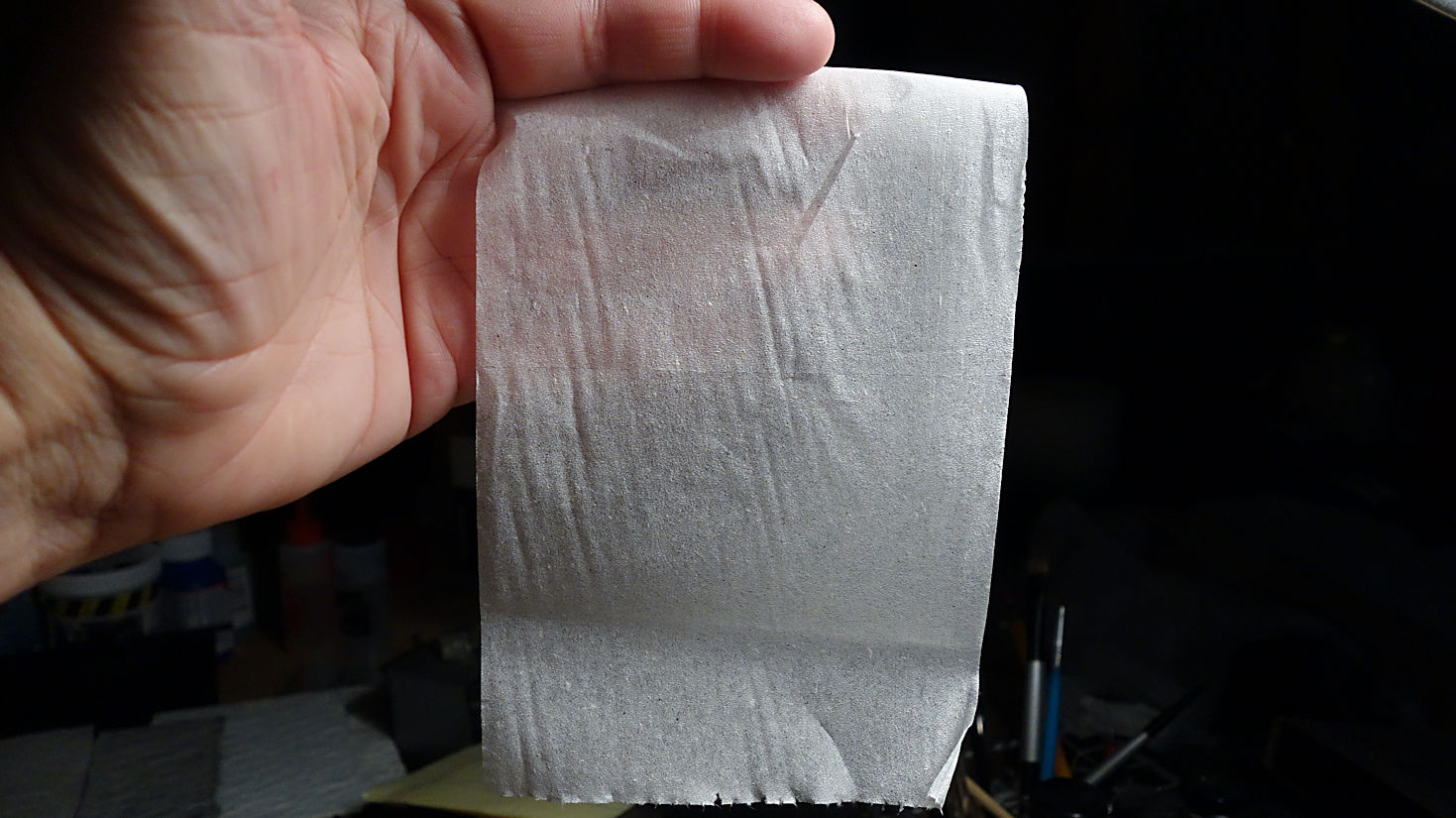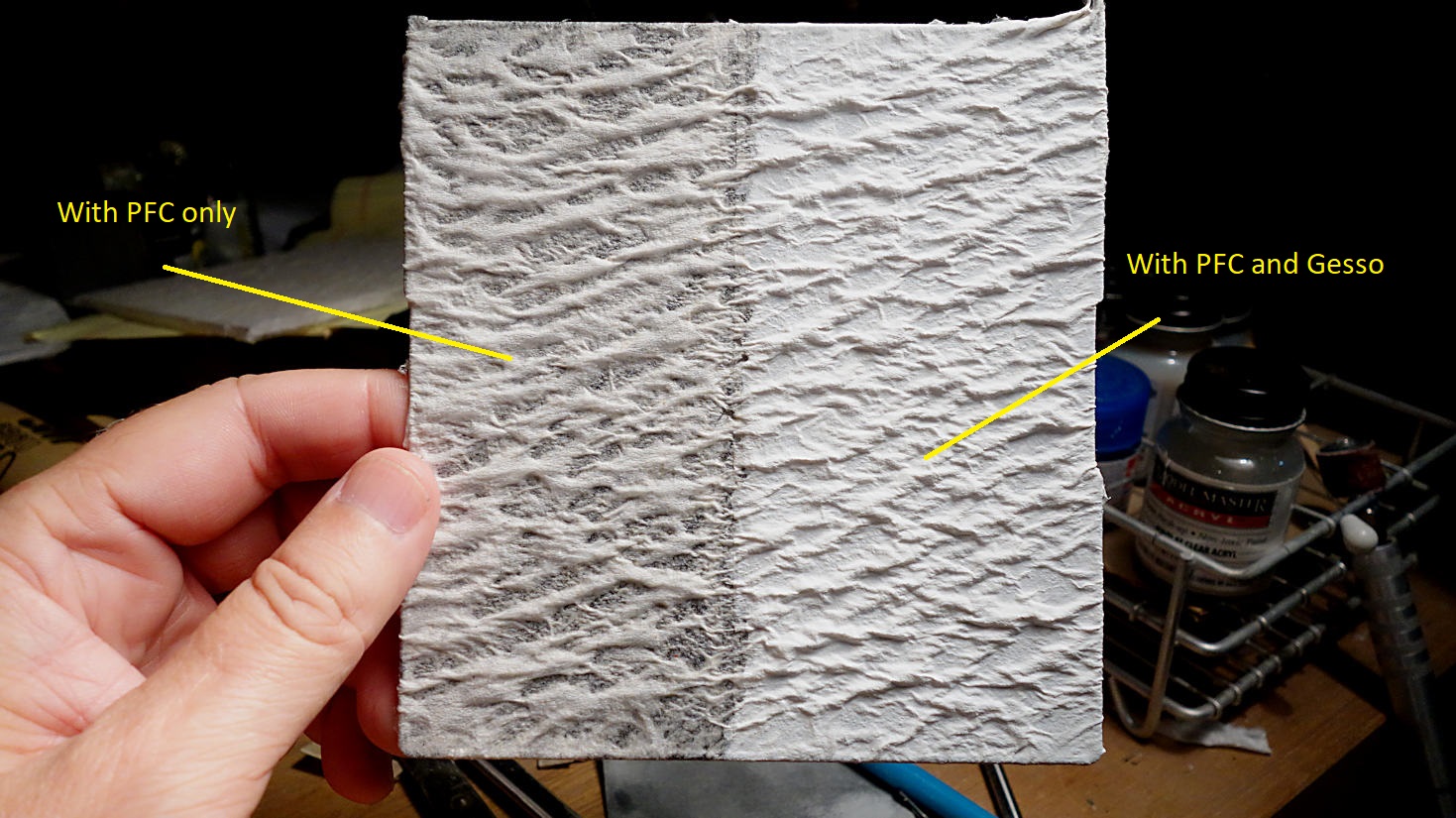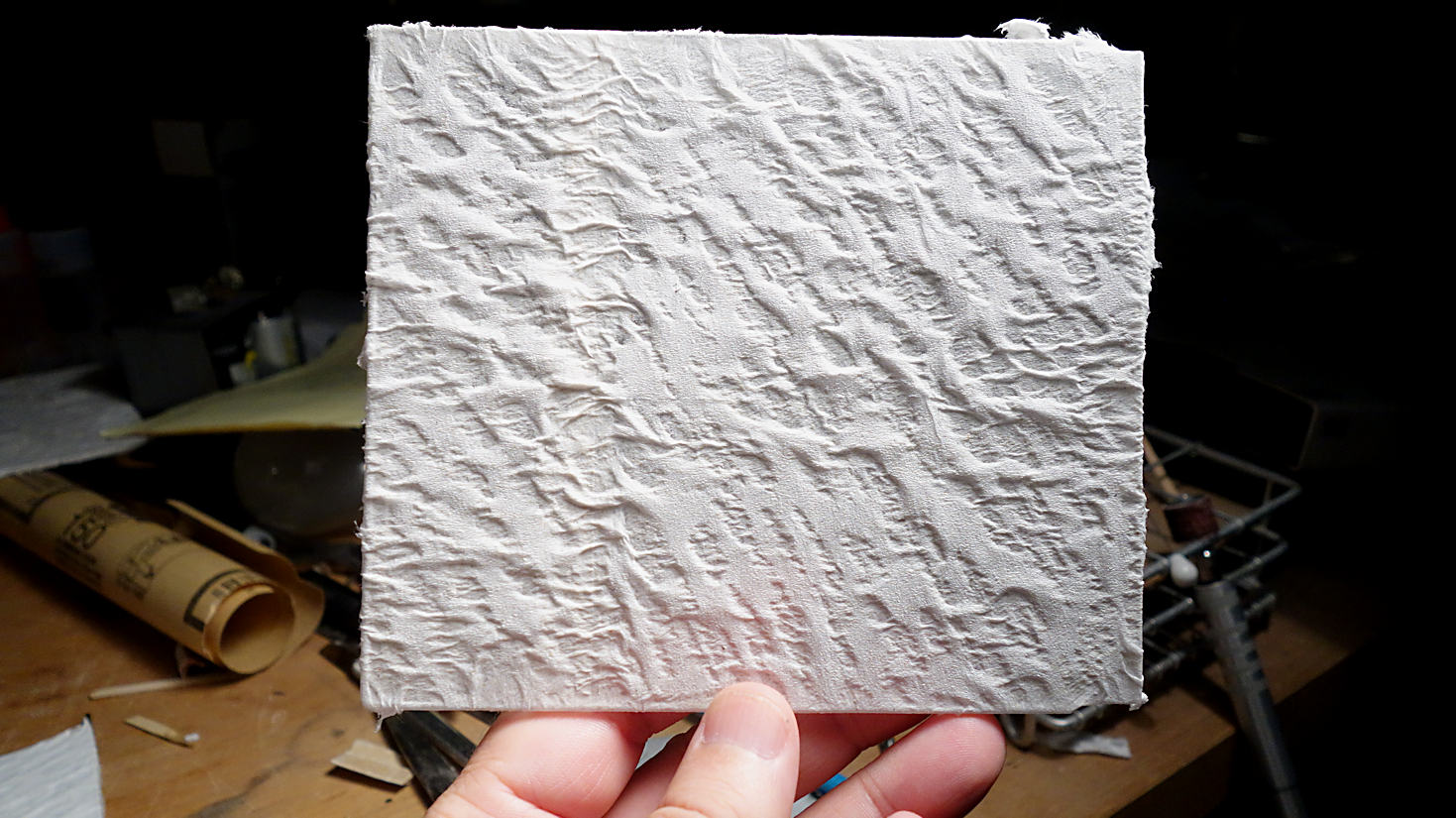Update
First things first. I learned rather quickly that I need to use paper that is not only thin, but that is free of any relief. Any sort of relief on the paper causes too much disruption to the final look.
Lastly, thinner paper seems to produce a more convincing wave pattern. And, you are able to shape the wave much more readily. I experimented with using facial tissue, thicker TP, and with using more than three layers of TP. None of these options performed as nice as the example outlined below. For once, contrary to popular opinion, thinner TP is better! Who'd a thunk.
Below: Look how thin this stuff is. I found this at a Woodmans grocery store. It's called Spirit, and you can buy it one roll at a time. That is nice that I didn't have to buy a whole pack. The packaging says it has 1100 sheets, and, they claim no other roll lasts longer. Rrrrright.

A few more things to note: The author of the video suggests using at least 3 layers of paper. Secondly, he forms the waves by means of pushing the paper around with his brush. I followed his steps in my first test sample posted earlier on. Though it does work, I find that the waves are too narrow, and they lack volume to them. It is not quite what I want. Also, the process will often create waves that fold over onto themselves.
By trying this, and trying that, I came up with the following:
1. I first smear the glue concoction to the base.
2. I then lay the paper sheet onto the base in a way where it sort of rolls on. This minimizes wrinkles. It's best to start each layer as wrinkle free as possible.
3. Using a flat brush, and by using the flat tip of it, I dab at the paper in patterns to create the wave troughs. I wet the brush often with the glue concoction. Wetting the brush helps to glue the paper down, and, it causes the paper to wrinkle some via wicking. The wrinkles help to form a more convincing wave form.
What is interesting is that I have to do this same process to each layer of paper. This is the case even though that the two layers don't match other, and, the bottom layer is not even seen. I have found that if I don't do this, the final wave layer will not form the way that I like it to. It is very strange, but it's proved true more than once. They seem to work in concert with each other.
4. I use no more than 2 layers of paper. More than that... I start to lose the papers ability to form the more intricate waves.
5. Here is the problem though. The waves are very delicate. In my process, not all of the paper gets glue applied to it. This presents a problem at step 7 because doing that step can mash the waves either by physical pressure, or, the waves collapse when they are dampened. I had to devise a way around this. This leads me to step 6.
6. I AB a coating of PFC onto the paper. This seals the paper, and firms it up just enough to receive step 7.
7. (Note: See my 9/10 update regarding the gesso) I apply gesso to remove any paper texture and to smooth things out. This is a multilayer process. The thing that I learned here is that you should thin the gesso with water prior to its application. This minimizes brush marks. With my first attempts the gesso was not thinned and it left brush marks with each application. Not good. I read that you can thin it by up as much as 25%.
The next steps would read as... apply the paint, apply cotton, and then apply the clear gel. I will probably test those next. I don't expect any major issues. My famous last words...
Below: Self-explanatory.

Below: In this example I tested other wave patterns. I will probably use this type of pattern nearer to the sub where there will be a lot of frothing. This test piece is without the PFC applied.

I want to say that I am not bashing the authors process. I think that his process is pretty dang creative. I am merely tweaking it to my taste. His is an excellent idea and my hats off to him for creating it.
What else am I working on? I am applying CA around the edges of the plexiglass bow wave in order to seal gaps, and, to smooth out/blend them to the main plexiglass substrate.
Lastly, it is time for my disclaimer. All of this is just my opinion.
I am much closer to actually doing this on the dio.
Long read.
THE END